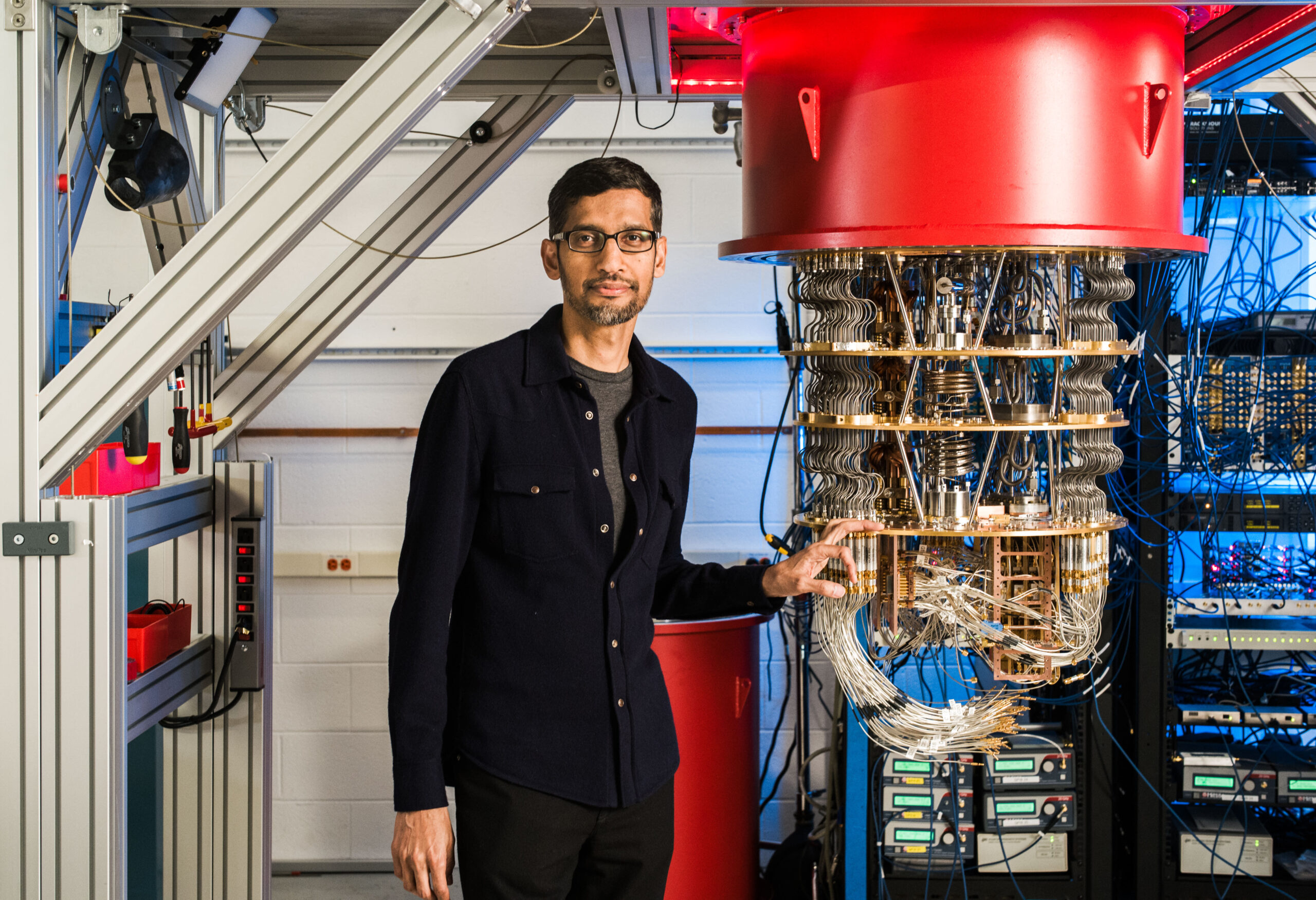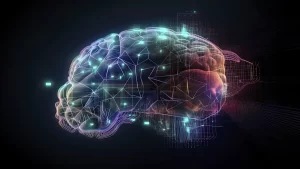Introduction
In the realm of computing, a revolution is brewing—one that promises to transcend the limits of traditional binary systems and unlock unprecedented computational power. This revolution lies in the realm of quantum computing, a field where the laws of quantum mechanics reign supreme, offering a tantalizing glimpse into a future where complex problems are solved in the blink of an eye.
At the heart of this transformation lies the semiconductor industry, poised to usher in a new era of innovation and discovery.
Follow us on Linkedin for everything around Semiconductors & AI
The Quantum Difference:
The cornerstone of quantum computing lies in the concept of qubits, the quantum counterpart to classical bits.
Unlike their binary counterparts, qubits possess the remarkable property of superposition, where they can exist in multiple states simultaneously.
This inherent parallelism allows quantum computers to explore an exponential number of possibilities in a fraction of the time it would take classical computers.
However, harnessing this power requires a radical departure from traditional chip design.
Read More: Meta Introduces ‘Imagine’: A Revolutionary Image Generation Feature – techovedas
1. Integration of Classical and Quantum Components:
A functional quantum computer needs both classical and quantum parts working together. VLSI needs to find ways to integrate these on a single chip while considering:
Temperature control: Quantum bits (qubits) require super cold temperatures, while classical electronics work at room temperature. VLSI needs to design for this disparity.
Error correction: Qubits are fragile and prone to errors. VLSI design needs to incorporate error correction mechanisms within the chip itself.
Example:
Horse Ridge by Intel: This chip, built with standard 22nm FinFET technology, manages and controls qubits at near cryogenic temperatures (around 3 Kelvin). This is a significant step towards integrating classical and quantum components using VLSI techniques.
2. Scalability:
Building large-scale quantum computers necessitates adding many qubits. However, maintaining qubit coherence (their special quantum state) becomes difficult as the number increases. VLSI needs to develop methods for scalable qubit control and communication on a single chip.
Crosstalk: As the number of qubits increases, the electrical signals controlling one qubit can interfere with its neighbors (crosstalk). VLSI needs to develop techniques to isolate qubits and minimize crosstalk, such as improved layout designs, shielding mechanisms, and error correction protocols.
Readout complexity: Reading the state of many qubits simultaneously becomes increasingly complex. VLSI needs to design efficient readout circuits that can handle a large number of qubits without introducing errors. This might involve exploring new multiplexing techniques or developing specialized readout architectures.
Interconnectivity: Quantum computations often require complex interactions between qubits. VLSI needs to design efficient communication pathways between qubits on a chip while minimizing the distance traveled by the control signals. This could involve novel interconnect materials with lower signal degradation or exploring architectures with nearest-neighbor qubit interactions.
3. Novel Materials and Processes:
Current transistor technology (CMOS) may not be ideal for qubits. VLSI needs to explore new materials and processes for qubit fabrication that can be compatible with chip manufacturing.
Superconducting qubits: A leading approach uses superconductors to encode quantum information. VLSI needs to develop reliable and scalable fabrication processes for these qubits that can be integrated with standard chip manufacturing techniques. This might involve exploring new materials for qubit deposition or developing new etching processes compatible with superconductors.
Topological qubits: These are a promising alternative that might be more robust to errors. VLSI needs to find ways to fabricate and manipulate these qubits on a chip, which often involve exotic materials and complex manufacturing processes. Research in this area is ongoing, with challenges in material growth and device integration.
Spintronics: This approach uses electron spin to encode quantum information. VLSI needs to develop methods for manipulating spin states on a chip efficiently. This could involve exploring new materials with strong spin-orbit coupling or developing new control mechanisms using electric fields or light.
Read More: 8 Reasons Why Neuromorphic Computing Demands a Revolution in Chip Design
Navigating New Frontiers:
Building quantum chips demands a reimagining of conventional approaches. From superconducting circuits to trapped ions and photonic chips, each avenue presents its own set of challenges.
Superconducting circuits operate at temperatures approaching absolute zero, necessitating complex cooling systems. Trapped ions offer exquisite control but struggle with scalability.
Photonic chips promise long-distance communication but face limitations in qubit manipulation.
Overcoming these hurdles requires a convergence of nanotechnology, materials science, and advanced control systems.
Tackling Challenges Head-On:
Chief among the obstacles confronting quantum computing is the fragile nature of qubits. Susceptible to noise and errors, maintaining coherence—the stability of quantum states—is paramount.
Achieving coherence over extended periods is a formidable challenge, one that demands innovative solutions and cutting-edge technologies.
Furthermore, scalability remains a critical barrier, with current devices boasting only a handful of qubits.
However, with concerted research efforts and technological advancements, the path to larger, more robust quantum computers becomes increasingly attainable.
Read More: TSMC Will Charge Its Customers More for US-Made Chips Despite Chips Act Funding – techovedas
A World of Possibilities:
The implications of quantum computing extend far beyond the confines of the laboratory, permeating diverse industries with the promise of transformative change.
In materials science, quantum simulations offer insights into atomic-level phenomena, fueling breakthroughs in battery technology, solar cells, and drug development.
In the realm of pharmaceuticals, quantum computers accelerate the process of drug discovery, revolutionizing the way new treatments are developed and tested.
Meanwhile, in finance, quantum algorithms promise to enhance risk assessment and portfolio optimization, reshaping the landscape of economic modeling.
And in the realm of artificial intelligence, quantum machine learning heralds a new frontier, empowering AI systems with unparalleled capabilities.
Read More: Apple to Employ 5 lakh in Next 3 Years: Set to Scale up Production in India – techovedas
The Crucial Role of Semiconductors:
Amidst this wave of innovation, the semiconductor industry stands as a linchpin, driving progress and pushing the boundaries of possibility.
Advancements in nanotechnology, fabrication techniques, and control systems are indispensable in the quest to realize the full potential of quantum computing.
As research continues to blur the lines between classical and quantum computing, the emergence of hybrid systems—a marriage of both approaches—seems increasingly inevitable, offering the best of both worlds.
Read More: TSMC Will Charge Its Customers More for US-Made Chips Despite Chips Act Funding – techovedas
Conclusion:
In the nexus of quantum computing and the semiconductor industry, a revolution is underway—a revolution fueled by curiosity, innovation, and a relentless pursuit of the unknown.
While challenges abound, the rewards are boundless, promising a future where the impossible becomes routine, and the unimaginable becomes reality.
As we stand on the cusp of a new era, the journey ahead is fraught with uncertainty yet brimming with potential—a journey that promises to unlock the secrets of the universe and reshape the fabric of our reality.



